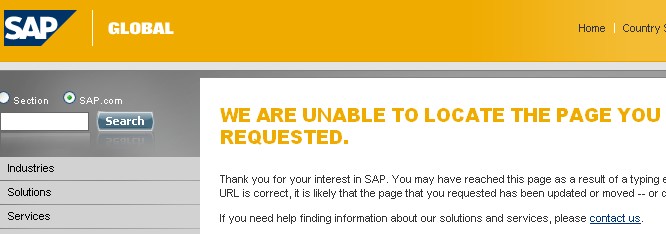Joining the conversation
Previously we listed:
4 criteria that characterize a corporate blog
Once a corporate blog is identified it is necessary to address if the blog offers readers and viewers a chance to place their comments. We use four criteria to decide if conversation is fostered on a blog or not, namely:
a – viewing the blog and reading content does not require registration = open to the public; and
b – the blog provides people with the option to leave a comment which is then being posted by the moderator (i.e. exclusing spam and non-related posts but including those that may disagree with a point made in a post) ==> joining the conversation; and
c – the blog does not just broadcast – send out – the company’s press releases but, instead, fosters a dialogue,
d – blog entries represent a personal voice – with one or several authors – and not just the compan’y ghost writers or the politicians staff writing the entries for her
To illustrate point a above, SAP’s restrictive policy means people must register for SAP’s business community network. Thereafter one can get access to SAPs executive blogs.
If one does not register with SAP’s business community network, entering http://www.sap.com/community/pub/blogs.epx results in the following page being served in one’s browser window:

In the blogosphere it seems silly to require people to have to register just to view a blog or to be able to get its RSS feed.
While luring prospects to your corporate website does not ever go away, strategists need to consider that communities are organically forming on the social web. In these communities, real relationships form and grow, therefore trust is higher than the irrelevant corporate website. Now given that blogs afford a quick response mechanism for readers and customers by leaving a comment, this opportunity should be used. If the blog is just used for publishing press releases, while not giving readers a chance to join the conversation – that is leaving a comment – an opportunity that should not be wasted. This is sometimes done as this example shows:
– Jörg Tauss – MdB (Member of Parliament – Germany) – no comment feature available
In addition, having staff write a CEO’s or an elected official’s entries is not the route to go. Instead, Margot Wallström, Member of the Barroso Commission 2004-2009 demonstrates that writing your own blog entries has pros and cons but it surely makes things more personal and, as importantly, assures that your readership joins the conversation (e.g., every entry has several comments):
Margot Wallström’s – European Commissioner – blog
| Institutional Relations and Communication Strategy |
brand versus reputation – Jeff Bezos, Richard Branson, Josef Ackermann and Pat Russo to the rescue